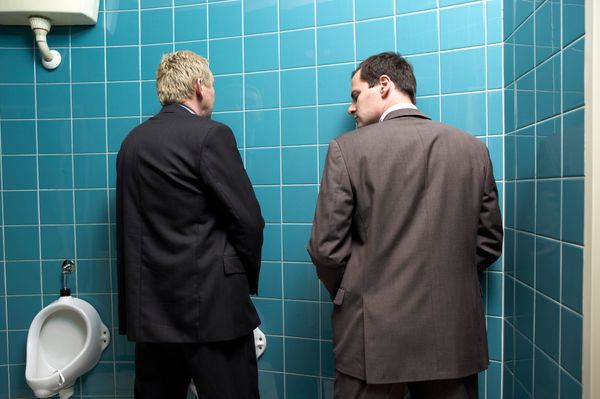Let's just settle one point before we get into the hows and whys of staring. Regardless of intent, context or even the facial expression of the person staring, it makes most people -- in most cultures -- uncomfortable to be steadily gazed upon. Unless you are a person that assumes everyone is in awe of you, being gaped at is rude because it makes people feel self-conscious. Etiquette and manners dictate that we should make those around us feel at ease. Anytime you're giving someone the impression that they're standing out, the gesture is usually going to come as unwelcome.
But that's the super short, non-interesting answer and doesn't really get to the crux of our question. It doesn't answer how we decided staring was an offensive quality and it doesn't address if perhaps it's time we start rethinking our collective aversion to it. So let's begin with a little psychology around our willingness -- and some would argue innate need -- to stare.
Advertisement
Let's acknowledge that the human brain seems to enjoy categories. Are you a man or a woman? Is this object big or small? Threatening or safe? It's something we do nearly constantly and seems to come quite naturally [source: Invisibilia]. Of course, most of us who are sighted do this by looking at the world around us and processing it. Even glancing at a stranger's face requires a pretty decent categorization process, where we check the eyes, nose and mouth quickly for recognition [source: Musolf].
The thing is, a small deviation in what we're used to -- let's say a prominent birth mark or a scar at the lips -- might send our brain into overdrive, as we now might not as quickly scan and forget. So what do we do? We stare. Some posit that this is a good survival mechanism for making sure we're sticking with our own family or community or --at the very least -- it implies we're avoiding enemies [source: Musolf].
Now in a way, that could be an argument for why it's rude to stare. It implies that someone is different or strange-seeming. That's a very dangerous and offensive action towards a person with a disability or who is physically marked by a cultural or racial signifier different from our own. But one study argues that the response to stare at minority populations in our culture is less about judgment and more about understanding.
The 2012 University of Southern California study had participants observe everyday actions by both typical-abled people and those with a "novel biological effector" [source: Liew]. (For instance, a woman without fully developed arms might be shown accomplishing the same task with her residual limbs.) The researchers found that when watching a typical person using their hands, the brain was rather quiet; when a person with residual limbs was shown, the brains of the participants showed enormous activity [source: Liew]. But even more interesting? As they continued watching, their brains quieted to the same levels as when they watched the typically-functioning video.
What does this say? It might imply that watching people who are different than us is actually helping us learn and empathize. It doesn't exactly give you free reign to stare at strangers, but it might not hurt to understand why a child, for instance, might need a lesson in differences after closely observing someone who doesn't look like them.
Advertisement



